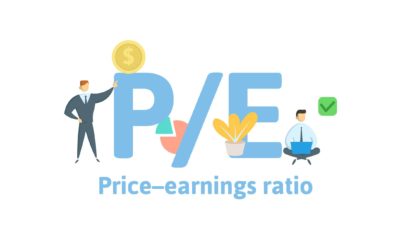Investors could find themselves with many unhappy returns if they end up using the wrong measures to calculate the returns an ASX-listed entity makes as part of their stock screening process.
While most understand what a return on investment is (and maybe how to calculate this measure), they may not be applying this correctly when valuating a stock as they don't have enough of an understanding of what exactly they are measuring.
This is because there are several ways to calculate returns. The main ones include return on equity (ROE), return on invested capital (ROIC) and return on assets (ROA).
You've probably come across these terms if you read enough investment articles and reports, although you should avoid falling into the trap of thinking these terms can be used interchangeably and that they essentially measure the same thing.
This isn't true and using the wrong return metric on a stock will give you a misleading impression of the company's performance. Below is a brief explanation of the differences between these return ratios and the type of stocks they should be used on.
Return on Equity (ROE)
The ROE measures the profit generated to shareholder's equity. Shareholders' equity is what the company is worth to shareholders after all debtors have been paid.
In order words, shareholders' equity is the net asset value of the company (total assets minus total liabilities), and you can find out what this is on an ASX company's balance sheet.
ROE tells you the profit a firm can make as a percentage of the equity in the firm. The higher the percentage, the better management is using shareholders' funds to generate a profit.
However, the ROE can be skewed by the amount of debt on a company's balance sheet. This means management can increase its ROE by borrowing more – and more debt (and higher ROE) doesn't necessarily mean a better run company.
This is why I seldom look at the ROE of an ASX stock. The exception are the banks. This is because debt is an integral part of their business (they borrow to lend) so the ROE does actually represent how effective they are at managing their business.
Return on Invested Capital (ROIC)
For most other ASX companies, I prefer to use ROIC over ROE. ROIC, which some simplify as return on capital (ROC), measures how efficiently a company is using the capital it as at its disposal to make a profit.
The ROIC is calculated by taking a company's adjusted net profit (i.e. excluding one-off items) and dividing it by the invested capital. There are several different ways analysts calculate this formula, and I won't get into the details except to say that ROIC can't be manipulated by debt levels and is one of the more useful measures for ASX stocks outside of the financials sector.
Return on Assets (ROA)
This is probably the least used metric of the three but it's quite useful for analysing companies in industries that require heavy investments in fixed assets such as plant and equipment.
The higher the ROA, the more productive the company's assets are. Intangibles and goodwill are not included in the calculation as the key aim calculating the ROA is to compared how one company's physical assets perform compared to its rival.
An example of an industry where ROA could be applied is utilities as these companies usually own power stations and infrastructure. These assets typically represent the biggest component under "non-current assets" on the balance sheet.
Foolish takeaway
There are two important things to keep in mind when looking at these measures of profitability. The first is that you shouldn't base your investment decision just based on one measurement.
While comparing the returns on companies in the same sector can yield useful insights, it doesn't tell you the whole story as you can't tell specifically which part of the business is doing well (or otherwise).
The second thing is that a higher return may be a sign that the company has a competitive edge over its competitors, assuming this is observed consistently over a few years. This means the stock could be worth buying even if it trades at a premium on a price-earnings (P/E) basis.
Again, because you can't tell exactly what's driving the stronger returns, you will need to dig deeper to ensure this isn't caused by an anomality.
Looking at any returns measure should only be the starting point of your research.
Happy hunting fellow Fools!



